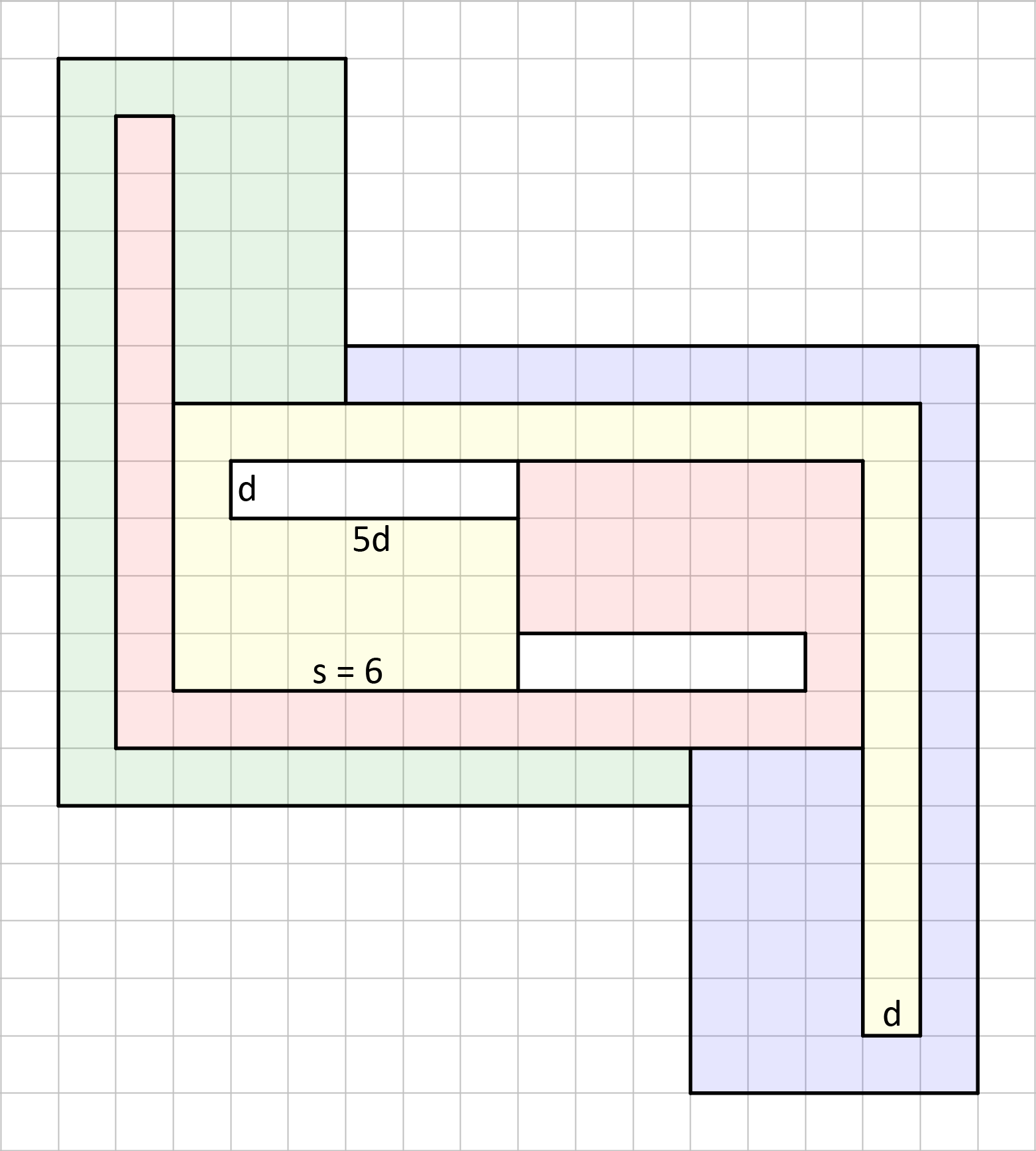Thomas-Trunk-Tetrad
| Further Questions about Tetrads |
| 20. Can two rectilinear polygons surround two others? |

| d = 1 H = 5 A = 42 |
|
| d = 0.5 H = 1.25 A = 39 |
|
| d = 0.25 H = 0.3125 A = 37.5 |
|
| d = 0.1 H = 0.05 A = 36.6 |
|
| d = 0.05 H = 0.0125 A = 36.3 |
|
| d = 0.025 H = 0.003125 A = 36.15 |
Summary trunk thickness d hole area H tile area A 1 5 42 0.5 1.25 39 0.25 0.3125 37.5 0.1 0.05 36.6 0.05 0.0125 36.3 0.025 0.003125 36.15 0.01 0.0005 36.06 0.005 0.000125 36.03 0.0025 0.00003125 36.015 0.001 0.000005 36.006 0.0005 0.00000125 36.003 0.00025 0.0000003125 36.0015 0.0001 0.00000005 36.0006 0.00005 0.0000000125 36.0003 0.000025 0.000000003125 36.00015 0.00001 0.0000000005 36.00006 0.000005 0.000000000125 36.00003 0.0000025 0.00000000003125 36.000015 0.000001 0.000000000005 36.000006 0.0000005 0.00000000000125 36.000003 0.00000025 0.000000000000313 36.0000015 0.0000001 0.00000000000005 36.0000006 0.00000005 0.000000000000013 36.0000003 0.000000025 0.000000000000003 36.00000015 0.00000001 0.000000000000001 36.00000006Obviouly it is possible to construct such a tetrad for arbitrary small holes.
| Previous Question | Tetrads Contents | References |